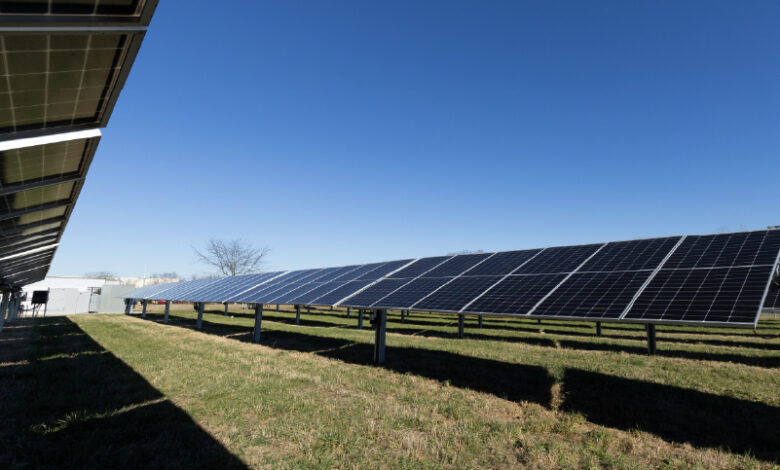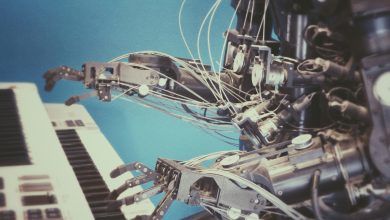
Artificial intelligence (AI) is reshaping industries at speed, unlocking new capabilities in healthcare, finance, logistics and beyond. However, as AI adoption accelerates, so do the demands on IT infrastructure. To truly harness AI’s potential, organisations must rethink how they design, scale and manage their data centre ecosystems. AI workloads require far more than just additional processing power. The entire architecture supporting AI – from power distribution and cooling to rack densities and energy efficiency – needs to evolve.
The rise of AI is forcing a fundamental shift in how IT infrastructure is designed, built, and managed. Unlike traditional IT workloads, AI computing is power-intensive, generates immense heat, and requires high-speed data movement. These factors mean that data centres must undergo significant transformation to remain viable in an AI-driven world.
So, what will this infrastructure look like in the coming years? Key trends indicate a future shaped by higher capacity, unconventional load profiles, and a relentless drive for efficiency.
The growth of AI and its impact on IT infrastructure
The economic impact of AI is staggering. McKinsey estimates that generative AI alone could contribute up to $4.4 trillion annually to the global economy. But this progress comes at a cost: AI workloads are significantly more demanding than traditional computing tasks, requiring advanced graphics processing units (GPUs), specialised storage solutions and innovative cooling techniques.
By 2028, AI could account for nearly 19% of total data centre power consumption. This rapid shift is already causing a rethink in how IT infrastructure is designed and deployed, with data centres facing five critical challenges:
- Expanding output capacity,
- Scaling up data centres,
- Accessing always-on power,
- Managing unconventional load profiles,
- Balancing upgrades with long-term viability.
Expanding output capacity: the rise of high-density computing
AI demands extreme processing power. Traditional server racks operating at 10-15 kW are being replaced with high-density racks commonly reaching over 50 kW – and in some cases, even 300 kW. As a result, power distribution units (PDUs), uninterruptible power supplies (UPSs), and cooling infrastructure must scale accordingly.
To accommodate this surge, data centres are increasingly adopting liquid cooling. Unlike conventional air cooling, which struggles to manage the heat output of AI workloads, liquid cooling solutions – such as direct-to-chip or immersion cooling – offer higher efficiency and improved thermal management as they dissipate heat directly from the chip. This transition is already underway, with leading AI data centres shifting towards hybrid cooling models.
Alongside cooling, power management and distribution is a growing concern. AI’s rapid data processing requires infrastructure that can handle significant fluctuations in power load. This is forcing operators to consider alternative energy sources and dynamic power solutions, with an increasing emphasis on modular architectures that can be quickly scaled up to meet demand.
Scaling up – data centres are getting bigger
As AI adoption grows, so does the scale of the data centres supporting it. Today’s standard 3 MW data centre blocks will soon be overshadowed by 20 MW deployments, with hyperscale and edge data centres expanding rapidly.
This growth is not only about size – it’s about adaptability. New data centre designs prioritise modular, scalable deployments that can expand on demand. These architectures must support fluctuating workloads while optimising energy efficiency.
Moreover, AI’s demand for real-time processing means more data centres must be located closer to end users. This has led to a rise in edge computing, where smaller, high-performance data centres process AI workloads at the network’s edge. As AI applications expand – particularly in autonomous systems, smart cities, and real-time analytics – the edge will play a crucial role in low-latency performance.
The quest for always-on power
With AI models requiring continuous processing, power reliability is non-negotiable. Unlike traditional enterprise IT systems, AI clusters operate 24/7, generating significant heat and energy demand spikes.
To mitigate this, next-generation data centres are integrating battery energy storage systems (BESS), microgrids and AI-driven energy management solutions. Hybrid power models combining on-site renewable energy with grid-based solutions are also gaining traction. As the demand for AI computing scales, grid stability will become a major industry-wide challenge, and we expect to see wider adoption of grid-balancing services.
In some cases, data centres are exploring direct partnerships with renewable energy providers, securing dedicated power sources to mitigate dependency on unstable grids. AI-driven energy forecasting is also being deployed to optimise power usage dynamically, reducing waste and improving resilience.
AI’s unconventional load profiles, and the challenge of dynamic power spikes
AI workloads do not follow predictable power consumption patterns. Unlike conventional IT loads, which operate at relatively stable power levels, AI clusters can pulse from 10% idle to 150% overload in an instant. These spikes create challenges for power distribution and thermal management.
To accommodate this, data centres must deploy dynamic power provisioning, adaptive cooling, and software-driven load balancing. Solutions such as AI-powered predictive analytics can help data centre operators anticipate power fluctuations and adjust resources accordingly.
This unpredictability also places new demands on backup power solutions. Traditional UPS systems may not be optimised for AI-driven power spikes, requiring innovative approaches to energy storage and instant-on power redundancy.
The pressure to upgrade and future-proof infrastructure
With AI computing evolving rapidly, many data centre operators face a difficult decision: upgrade existing infrastructure or build from scratch? Retrofitting older data centres to handle AI workloads requires significant investment in power, cooling and rack density. However, new AI-ready facilities are costly and time-consuming to deploy.
A hybrid approach may be the best solution. Data centre operators can extend the life of existing infrastructure by implementing high-efficiency power and cooling solutions while planning for future AI-driven expansions. This means investing in scalable, modular systems that can adapt as AI workloads evolve.
Additionally, the emergence of AI-specific data centre designs, such as AI factories and high-performance computing clusters, suggests that traditional data centre layouts may soon become obsolete. Operators must evaluate whether their existing facilities can support the AI revolution or if a ground-up redesign is necessary.
Preparing for an AI-driven future
The rise of AI represents both a challenge and an opportunity for IT infrastructure. The next-generation data centre will need to balance increased processing power with efficient energy practices, all while maintaining 24/7 operational stability.
To stay ahead, businesses must take a holistic approach, combining high-performance computing, advanced cooling technologies and intelligent energy management. Those that successfully navigate this transformation will unlock AI’s full potential – without compromising on efficiency, scalability or resilience.
One thing is certain: AI is not a passing trend. It is a fundamental shift in how computing power is utilised. Organisations that fail to prepare their IT infrastructure for the demands of AI risk being left behind in an increasingly competitive landscape.




